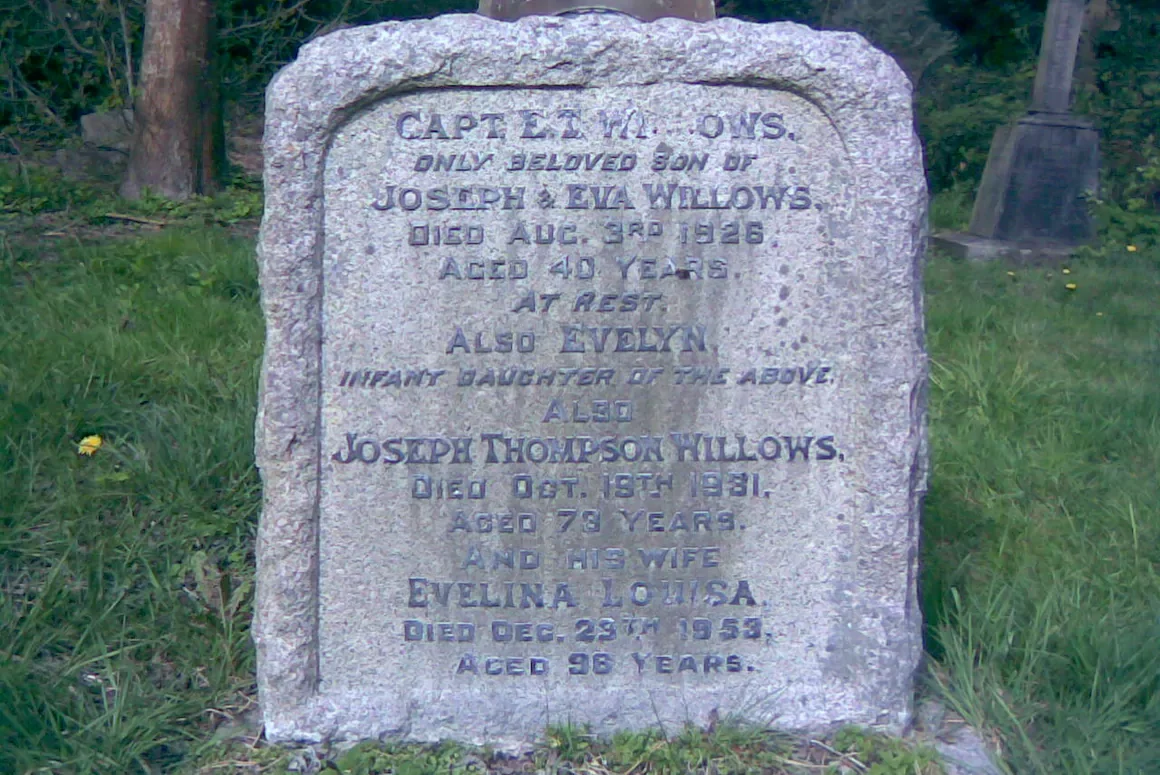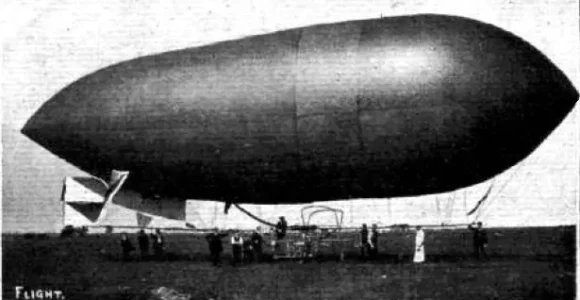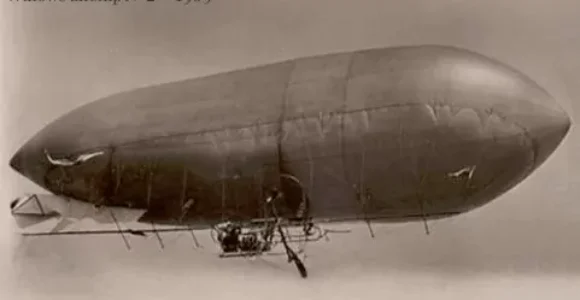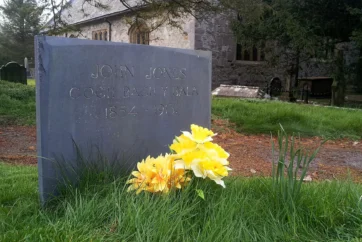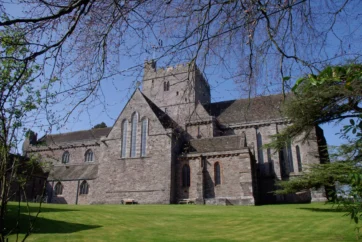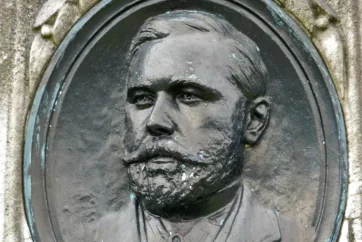![]()
He is remembered in the name of a street, a pub and a school in Cardiff. His achievements are recorded on a clock face in Cardiff Bay but his grave lies forgotten and neglected in Cardiff’s Cathays Cemetery.
His gravestone tells us:
Captain E. T. Willows
Only beloved son of Joseph and Eva Willows
Died August 3rd 1926
At rest
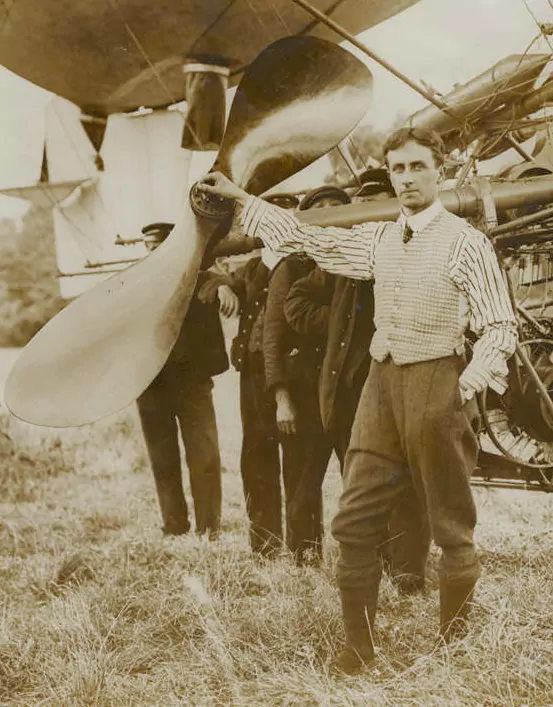
The simple letters on the simple stone are metal and are falling off. Without them his grave will lose its identity and become no different from the others that have faded beyond recognition. Yet it is a perfect example of a story in stone – a fading, apparently unremarkable gravestone, quietly shedding letters behind bushes in an overgrown part of a large cemetery, slowly slipping into the past and taking a fascinating story with it.
Ernest Thompson Willows, aviation pioneer and celebrity, 1886 – 1926.
He was born on 11th July 1886 at Newport Road in Cardiff in a house which is now used by Cardiff University. His father was a dentist and Ernest always intended to follow him, beginning his training in 1901. But the career laid out before him did not offer him the excitement at the leading edge of innovation that he craved.
His great enthusiasm was flight. These early days were exciting ones, when the sky seemed to be opening up to all sorts of possibilities, when the sky represented infinite freedom. It was the time of the Wright Brothers, of Bleriot, of Latham.
Ascents by balloon had been commonplace for over 100 years but Willows wanted greater control and to reduce the unfortunate effects of the wind on such flights. What he wanted to do was construct a semi-rigid framed balloon or dirigible and to provide it with a motor and a crew who would be able to steer it – to give them the ability to control their own space in the air. He was convinced that the future of travel lay with the airship not with the aeroplane. Yet his conviction had no practical foundation. He had no formal technical training, no financial backing, merely blind enthusiasm.
He built his first airship, Willows 1, in 1905, two years after the Wright Brothers’ significant achievement, when he was only 19. Willows No. 1 was a silk envelope 74 feet long (22.55 metres) and 18 feet wide (5.5 metres), with a gondola beneath. It was driven by a 7 hp Peugeot motorcycle engine. It had neither rudder nor elevator, relying instead upon the twin propellers, which provided steering capability. It was flown for the first time at East Moors, Cardiff, for 85 minutes on 5th August. It had six flights and in this way indicated to Willows that his dreams were not entirely unrealistic.
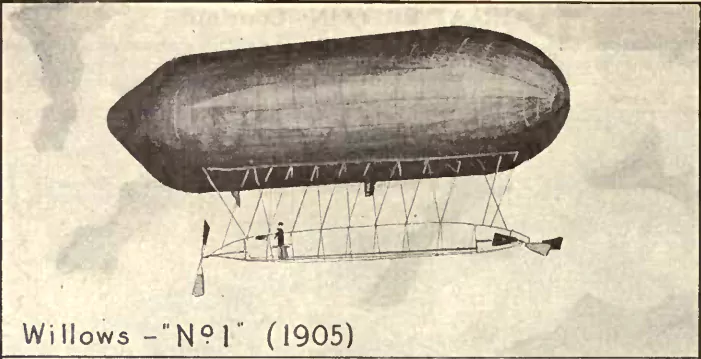
An improved version was built in 1909 and was called Willows 2. The craft was a little longer and bigger than Willows 1. He landed, in a great publicity stunt, outside Cardiff City Hall on 4th June 1910 and then flew back to his shed at East Moors. He wanted to win a £50 prize for the first such flight over Cardiff. A week later he repeated the flight to raise funds for the Infirmary. Willows was always trying to attract attention to his projects. He was a committed enthusiast but always lacked sponsorship or support.
In July 1910 Willows No. 2 flew from Cheltenham to Cardiff in four hours and then in August it flew from Cardiff to London. This was a significant moment. The flight was a record for a cross-country flight in Britain, at 122 miles, and in doing so he became the first aviator to fly across the Bristol Channel under power. The journey took 10 hours. He had to descend to about 12 feet off the ground and ask for directions from stunned people via a megaphone. The world was not yet ready for this simple SatNav prototype and he caused considerable alarm. In the end he followed the train line; it was easier.
- Willows No2 - Credit: "Flight" magazine, July 2, 1910. Public domain.
- Willows No2 - Credit: Extracted from Rosebud's Early Aviation Archive. Public domain
The world was not yet ready for this simple SatNav prototype and he caused considerable alarm.
He made sure that he flew down the Thames and over St. Paul’s Cathedral, for he was always eager to place his airship in the same photographic viewfinder as important landmarks.
On arrival he heard of a prize of £2,000 for the first man to fly from Paris to London, so he decided to take the airship over the Channel in order to make an attempt. Willows 2 was re-built and lengthened and called Willows 3. It first flew at the end of October 1910 over White City, London. Then it was re-named The City of Cardiff. It was now time for adventures.
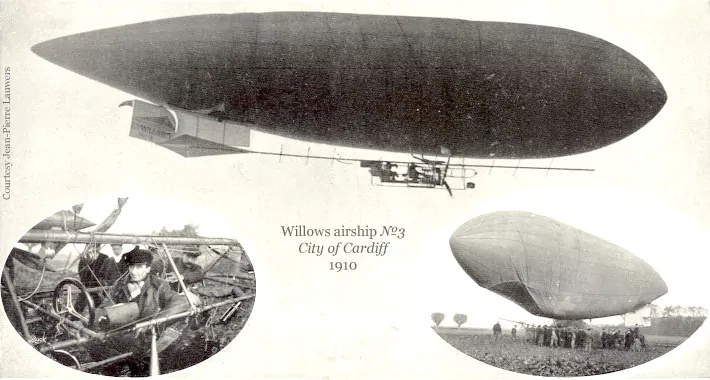
On 11th November 1910 he flew The City of Cardiff across the Channel, heading for Paris with his mechanic, Frank Godden, so that they could fly it back and claim the prize.
The journey was not without incident. There was thick fog over the Channel. There was a mechanical problem which required Willows to climb out onto the balloon envelope, whilst in flight, to fix it in the dark. Petrol froze in the engine. Then Godden dropped their maps over the side and into the sea. Eventually the airship came down at Corbehem, between Arras and Douai, because of a problem with the silk envelope. On arrival, French customs tried to charge him £30 import duty on his fuel. In the end it took almost eight weeks to reach Paris. He arrived on 28th December 1910 and on New Year’s Eve he was taking flights around the Eiffel Tower to illustrate the manoeuvrability of the design. This, however, illustrated his constant difficulty: his balloon fascinated as a novelty but he could not attract the investment he craved to take his concept further. He returned to Cardiff with his balloon, by road, unable to face any more continental dramas – and also apparently to escape the customs officials.
Ernest Willows moved to Birmingham and built a new airship – Willows 4 – which was flown in 1912 and sold to the Admiralty where it became His Majesty’s Naval Airship Number 2. They paid £1,050 for it. This one was more streamlined and had two four-bladed propellers and a two-seater gondola which was soon extended to accommodate a third man. It had a maximum speed of 50 mph.
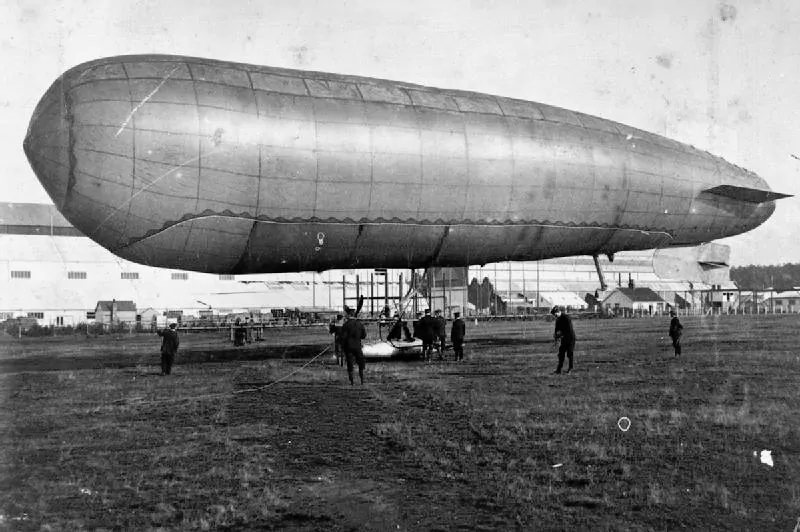
Production was moved to Welsh Harp in Hendon in 1913, where he developed Willows 5. This one had a rubberised fabric and a gondola for four people. He used it largely to take people on trips above London.
Of course the war intervened and he built barrage balloons in Westgate Street in Cardiff and also in Llanishen. In fact, he developed a barrage balloon which flew twice as high – at 10,000 feet – as the previous limit. In 1916 he joined the Royal Flying Corps and became a captain, constantly suggesting new ideas and refinements; however his enthusiasm made him little money. After the war he continued with ballooning, though perhaps with a growing realisation that great success would elude him.
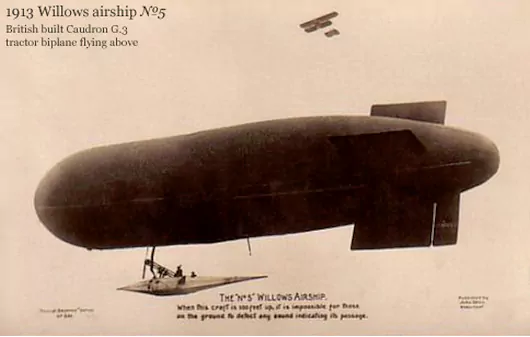
By October 1921 he was living on a decaying river boat on the Thames and watched others develop the airship. It is a great sadness that just before he died he would have known that Amundsen had flown over the North Pole in the airship Norge piloted by the Italian Umberto Nobile. It could have been him. If only…
Willows was reduced to offering tethered balloon flights at fairs. And that is how he died, on 23rd August 1926 at a Flower show in Hoo Park, Kempston, whilst taking people on aerial joy rides. The net covering the balloon tore away and the basket plunged to the ground, killing him and his four passengers.
He was the first person to hold a Royal Aero Club pilot certificate for an airship, but he had been left behind by a lack of support and finance, and his dreams and schemes fell to earth, just as he did.
You will find him in Cathays, in the largest municipal cemetery in Wales. It is very hard to find your way around, but the very helpful Cathays Cemetery Heritage Trail will guide you to Grave Number 20. You can download the guide here.
Feature image: Headstone at Grave of Captain Ernest Willows (Source – Creative Archive Licence)
Words: Geoff Brookes
First published in Welsh Country Magazine Jan-Feb 2013


